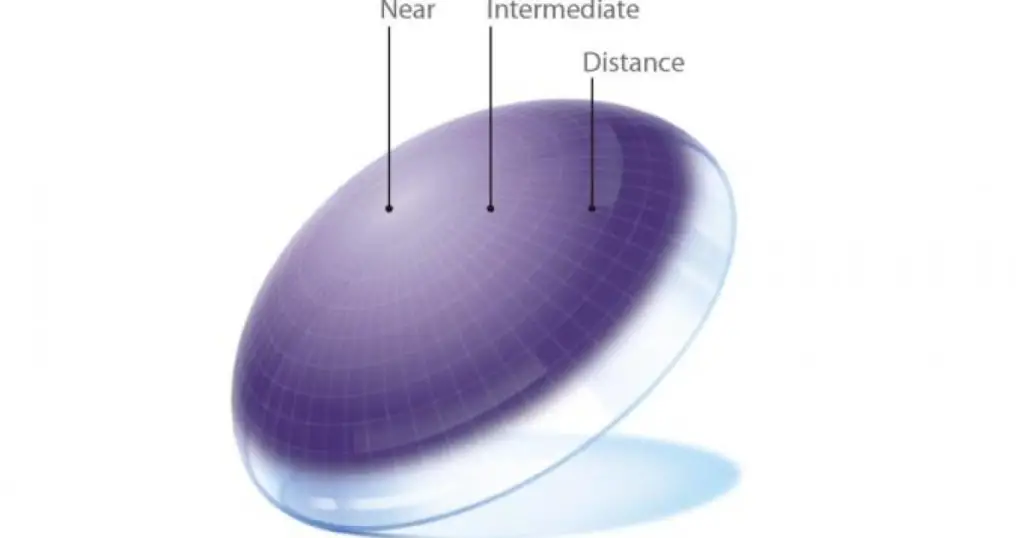Types of contact lenses for presbyopia.What types of contact lenses are available for presbyopia?
Contact Lenses for Presbyopia: Addressing Near and Far Vision Challenges
Presbyopia is a common age-related vision condition that typically begins to affect individuals around the age of 40. As we age, our eyes undergo changes that lead to a decreased ability to focus on near objects, resulting in blurry near vision. This condition is a normal part of the aging process and impacts millions of people worldwide. In this article, we will explore various options for correcting presbyopia with contact lenses, helping individuals regain clear vision at both near and far distances.
Understanding Presbyopia:
Presbyopia is primarily caused by the crystalline lens in the eye becoming less flexible over time. This loss of flexibility hampers the lens’s ability to change shape and focus on objects up close. The first signs of presbyopia typically include blurry near vision when reading or performing close-up tasks. Additional symptoms may include headaches, eye fatigue, and the need for better lighting while reading.

Types of contact lenses for presbyopia
Addition Power for Near Vision:
The degree of presbyopia varies from person to person and can progress with age. To address this condition, addition power is added to the patient’s existing prescription. In the early stages, an addition power of about +0.75 diopters (D) may suffice. However, as presbyopia progresses, the addition power can increase, reaching up to +3.5 D. This additional power is calculated based on the patient’s subjective refractive error and can correct both presbyopia and astigmatism.
Easily Adjusting to Your New Contact Lens Base Curve

Types of Presbyopia Contact Lenses:
- Near Vision Contact Lenses and Far Vision Spectacles: Some individuals opt for contact lenses to correct their near vision while using separate far vision spectacles when needed. This approach provides flexibility in addressing both near and far distances.
- Distance Contact Lenses and Near Vision Spectacles: Alternatively, some individuals choose to wear contact lenses for distance vision and use near vision spectacles when necessary for close-up tasks.
- Monovision with Contact Lenses: Monovision involves wearing a contact lens in one eye for near vision and a different lens in the other eye for distance vision. This technique allows each eye to focus differently, enabling both near and far vision.
- Bifocal Contact Lenses: Bifocal contact lenses feature two distinct prescription powers within the lens, one for near vision and one for distance vision. This design provides simultaneous correction for both visual needs.
- Multifocal Contact Lenses: Multifocal contact lenses, like AIR OPTIX® plus HydraGlyde® Multifocal, offer a seamless transition between near, intermediate, and far distances. These lenses incorporate advanced technologies to ensure clear vision at all ranges.
- Myopia Progression with Multifocal Contact Lenses: Multifocal contact lenses can also be used to manage myopia progression in addition to addressing presbyopia. These lenses help slow down the progression of nearsightedness in children and young adults.
- Aphakia Correction: Aphakia, a condition in which the natural lens is replaced or removed, can result from cataract surgery. Aphakic patients require vision correction to avoid issues like amblyopia, anisometropia, and aniseikonia. Contact lenses are often preferred over aphakic spectacles for their stability and ability to provide high-quality vision. Extended wear contact lenses are commonly used for adults and children with aphakia.
Optometrists’ Preferences and Advanced Multifocal Contact Lens Designs
Optometrists play a pivotal role in selecting and fitting contact lenses to address a variety of visual needs, including presbyopia and other conditions. Their expertise ensures that patients receive the most appropriate solutions for their vision challenges. Here, we delve into optometrists’ preferences and explore advanced multifocal contact lens designs that are transforming the field of vision correction.
Soft Contact Lenses with Aspherical Design:
Optometrists often prefer soft contact lenses with an aspherical design. These lenses offer several advantages, including improved visual acuity, enhanced contrast sensitivity, and reduced spherical aberrations. The aspherical design provides a more accurate fit to the cornea, resulting in improved comfort and vision for patients.
Types of contact lenses for presbyopia
Multifocal Contact Lens Designs:

Figure: a) The center of this contact lens corrects distance vision and the periphery provides near correction, b) This lens has a near center and a distance peripheral correction
When it comes to multifocal contact lenses, optometrists have several innovative designs at their disposal:
a. Distance Center and Near Periphery: This design places the distance correction at the center of the lens and provides near vision correction in the peripheral area. It offers a smooth transition between distance and near vision.
b. Near Center with Distance Periphery: In contrast, this design centers near vision correction and places distance correction in the periphery of the lens. It also aims to provide clear vision for both distances.
c. Concentric Ring of Distance and Reading: This multifocal design features concentric rings, with each ring dedicated to a specific distance range, such as far, intermediate, and near. It allows for precise vision correction at varying distances.
Patient Examination and Refraction:
Optometrists begin the process by examining the patient and conducting initial assessments with trial lenses. Visual acuity is tested binocularly for both near and far vision to evaluate the patient’s needs accurately.
During the examination, refraction over contact lenses is estimated for presbyopia using binocular flippers or trial lenses, typically in increments of +/- 0.25 D or +/- 0.50 D. It’s important to note that achieving perfect vision at both near and far distances may not always be possible, and patients may face challenges related to binocular fusion and potential dizziness, particularly with high-power addition lenses or monovision techniques.
Source- Contact lens fitting guide and methadology
Follow us in Facebook
Discover more from An Eye Care Blog
Subscribe to get the latest posts sent to your email.


You must be logged in to post a comment.